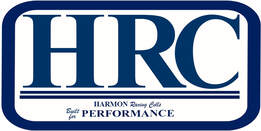Fuel Cells 101
Fuel Cells vs. Aluminum Tanks
While there are many products on the market today using the term 'fuel cell' this is, often times, a loose or incorrect association. Fuel cells consist of three main components; 1) an aluminum or steel outer container; 2) an internal, soft-resin bladder; and 3) explosion suppressant foam. The outer container is designed to help the bladder keep its shape and blunt any objects that hit it during an accident. The soft-bladder is designed to flex and absorb an impact and disperse its energy while containing the fuel. The foam is designed to both mitigate fuel slosh within the tank (to ensure better fuel delivery) and to prevent any pooling of vapors inside the tank from catching fire if there's a spark. Aluminum tanks typically consist of a completely sealed aluminum can with either internal baffled walls or a lowered sump to reduce fuel slosh and trap the fuel for delivery to the engine. While all fuel cells can be considered a fuel tank, no tank can be considered a fuel cell without all three components. From here fuel cells can be broken down into two main categories: FIA certified and non-FIA certified.
FIA vs. Non-FIA Certified
|
Many competitions require a standard FIA certified fuel cell in order to compete. So when it comes to competition use of a fuel cell it's important to know whether your cell is FIA certified or not. While most soft-resin bladders are built to FIA specifications (as outlined under FIA FT3/3.5/5-1999 specifications relating to fuel safety bladders) not all fuel cells come with an FIA certification/rating. Most companies, including Harmon Racing Cells, charge an additional fee that ranges from as little as $25 to nearly $100 USD to 'certify' a fuel cell. This includes, but is not limited to, special testing and a tamper-proof sticker adhered to the bladder itself. This sticker is only available through FIA approved fuel cell manufacturers and signifies that the fuel cell meets or exceeds FIA FT3-1999 standards for fuel cell bladder strength, construction, and assembly. This allows the safety bladder to be used in competition use worldwide in any FIA sanctioned event or any sanctioning body adhering to FIA safety standards.
Counter to FIA certified bladders, non-certified ones may or may not be allowed for competition use, depending on the particular racing body. While most soft-resin bladders are FIA certified most hard-bladders, such as plastic polyethylene or polypropylene tanks, are not as they are not made to FIA standards. While plastic tanks are considered a fuel cell by definition, they are not an equivalent substitute in terms of strength, construction, or safety. |

